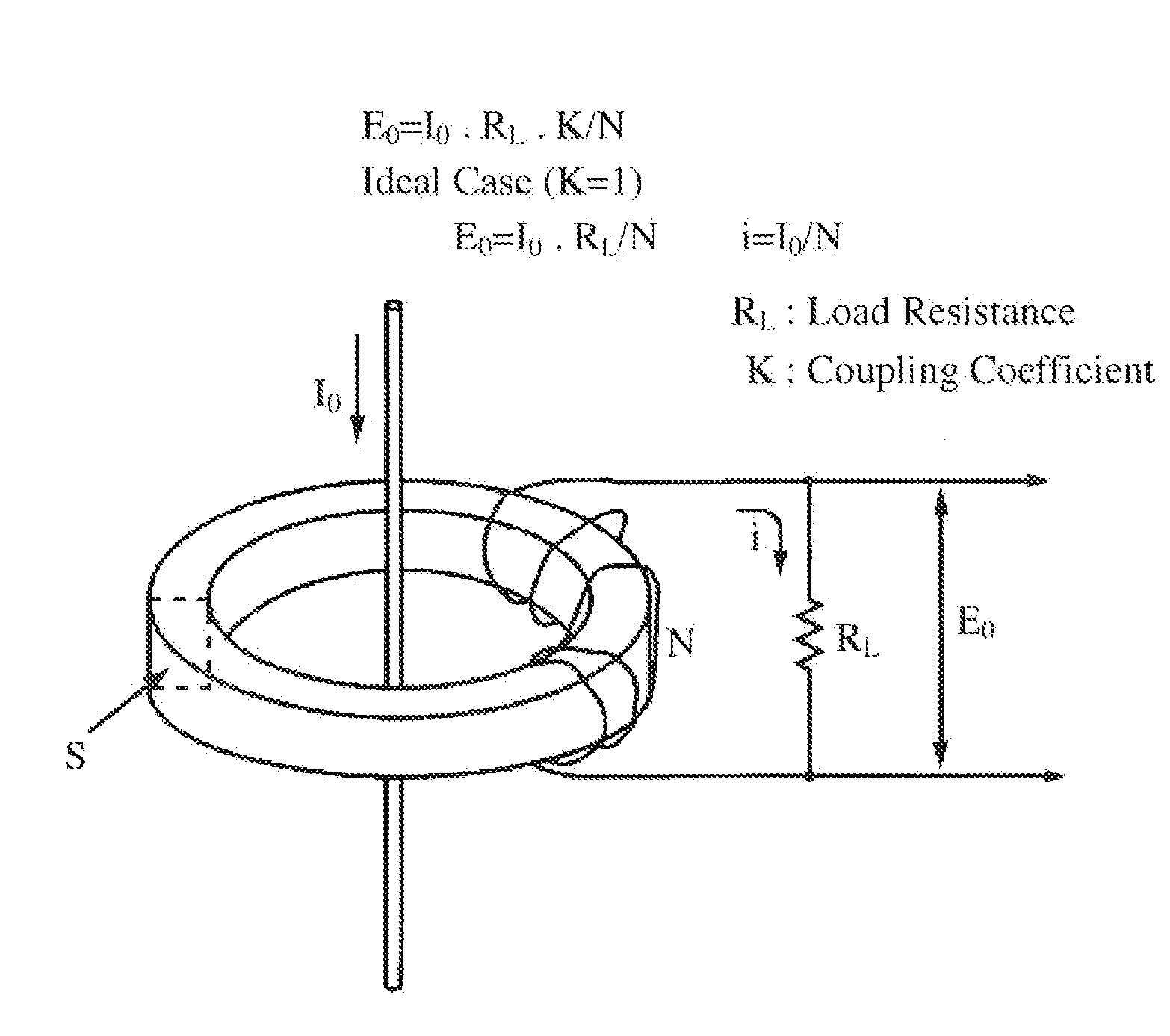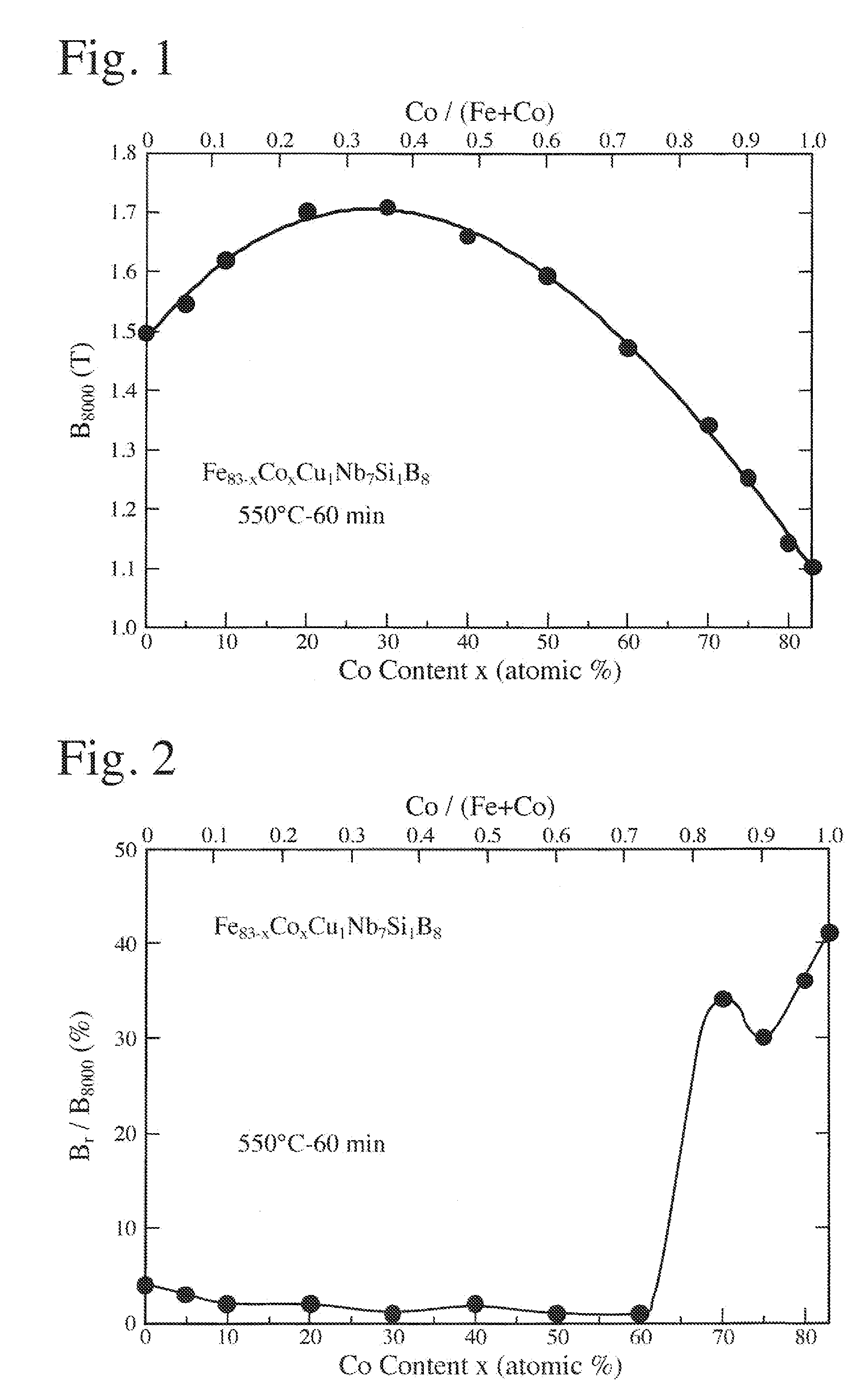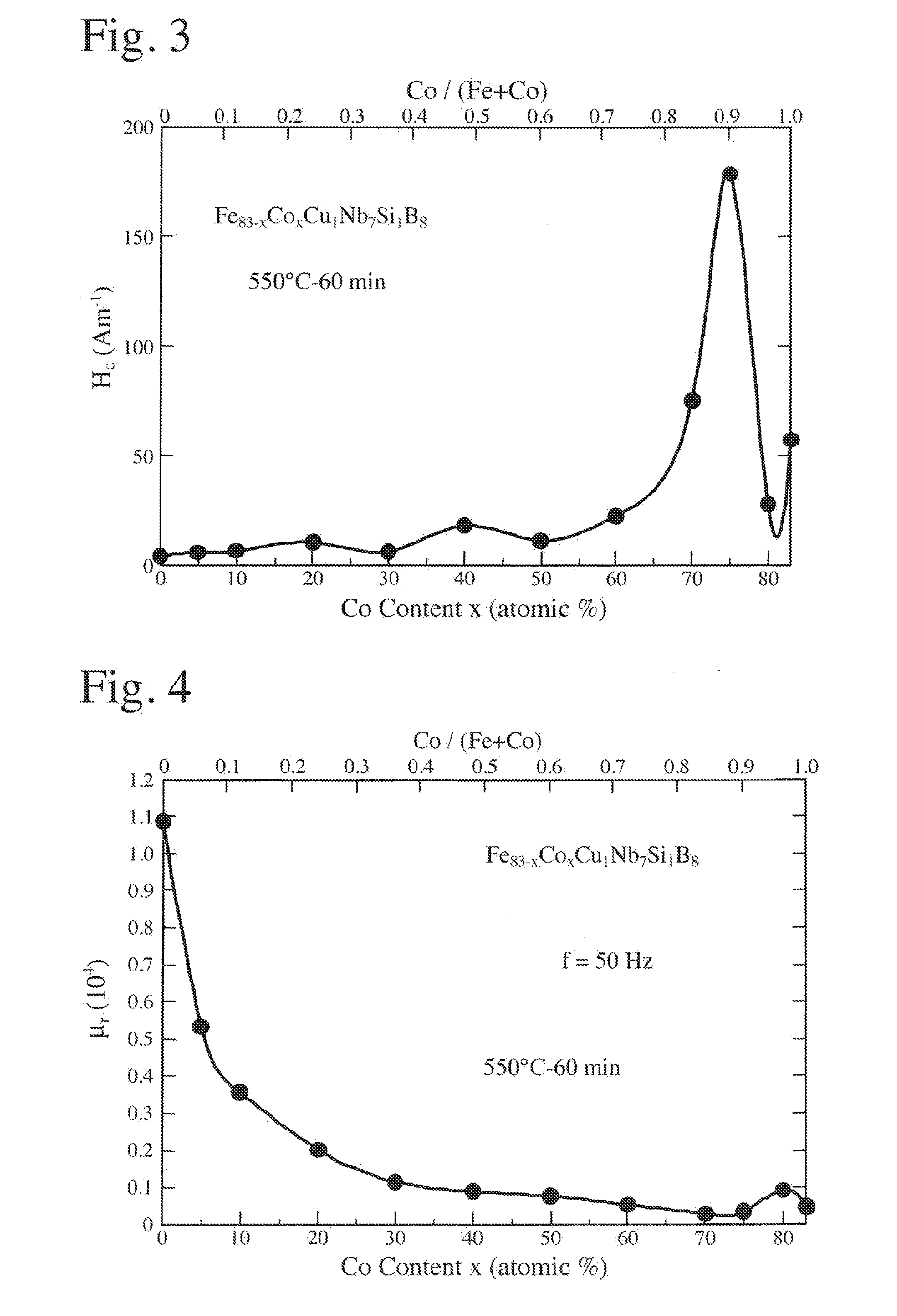Current Transformer Core, Current Transformer And Power Meter
a current transformer and transformer core technology, applied in the direction of transformer/inductance cores, conductors, magnetic bodies, etc., can solve the problems of poor linearity of the magnetization loop, large tension, and difficulty in providing high-accuracy current transformers, etc., to achieve accurate measurement of power
- Summary
- Abstract
- Description
- Claims
- Application Information
AI Technical Summary
Benefits of technology
Problems solved by technology
Method used
Image
Examples
example 1
[0070]An alloy melt of Fe83-xCoxCuxNb7Si1B8 (by atomic %) was rapidly quenched by a single roll method, to obtain a thin amorphous alloy ribbon of 5 mm in width and 21 μm in thickness. This thin amorphous alloy ribbon was wound to a toroidal core having an outer diameter of 30 mm and an inner diameter of 21 mm. The magnetic core was placed in a heat treatment furnace filled with a nitrogen gas, to carry out a heat treatment while applying a magnetic field of 280 k Am−1 in a direction perpendicular to the magnetic circuit of the magnetic core (in the width direction of the thin alloy ribbon, or in the height direction of the magnetic core). A heat treatment pattern used comprised temperature elevation at 10° C. / minute, keeping at 550° C. for 1 hour, and cooling at 2° C. / minute. Observation by an electron microscope revealed that the heat-treated alloy had a structure, about 70% of which was occupied by crystal grains having a particle size of about 10 nm and a body-cubic crystal stru...
example 2
[0074]Alloy melts having the compositions shown in Table 2 were rapidly quenched by a single roll method in an Ar atmosphere, to obtain thin amorphous alloy ribbons of 5 mm in width and 21 μm in thickness. Each thin amorphous alloy ribbon was wound to a current transformer core having an outer diameter of 30 mm and an inner diameter of 21 mm. Each magnetic core was heat-treated in the same manner as in Example 1, and then subjected to magnetic measurement. In the heat-treated alloy structure, ultrafine crystal grains having a particle size of 50 nm or less were generated. No. 33 represents a magnetic core made of an Fe-based, nano-crystalline alloy (Comparative Example), No. 34 represents a magnetic core made of a Co-based, amorphous alloy (Comparative Example), and No. 35 represents a magnetic core made of Parmalloy (Comparative Example).
[0075]With respect to a current transformer produced by using each magnetic core, phase difference and ratio error of rated current (expressed by ...
example 3
[0079]An alloy melt of Fe53.8 Co25Cu0.7Nb2.6Si9B9 (by atomic %) was rapidly quenched by a single roll method to obtain a thin amorphous alloy ribbon of 5 mm in width and 21 μm in thickness. This thin amorphous alloy ribbon was wound to a toroidal core having an outer diameter of 30 mm and an inner diameter of 21 mm. The magnetic core was placed in a heat treatment furnace having a nitrogen gas atmosphere, and heat-treated in the same manner as in Example 1, except that the heat treatment pattern comprised temperature elevation at 5° C. / minute, keeping at 530° C. for 2 hours, and cooling at 1° C. / minute. Observation by an electron microscope revealed that the heat-treated alloy had a structure, about 72% of which was occupied by crystal grains having a particle size of about 10 nm and a body-cubic crystal structure, the balance being mainly an amorphous phase. An X-ray diffraction pattern indicated crystal peaks corresponding to the body-cubic crystal phase.
[0080]Measurement revealed...
PUM
| Property | Measurement | Unit |
|---|---|---|
| particle size | aaaaa | aaaaa |
| magnetic flux density | aaaaa | aaaaa |
| temperature | aaaaa | aaaaa |
Abstract
Description
Claims
Application Information
 Login to View More
Login to View More - R&D
- Intellectual Property
- Life Sciences
- Materials
- Tech Scout
- Unparalleled Data Quality
- Higher Quality Content
- 60% Fewer Hallucinations
Browse by: Latest US Patents, China's latest patents, Technical Efficacy Thesaurus, Application Domain, Technology Topic, Popular Technical Reports.
© 2025 PatSnap. All rights reserved.Legal|Privacy policy|Modern Slavery Act Transparency Statement|Sitemap|About US| Contact US: help@patsnap.com



